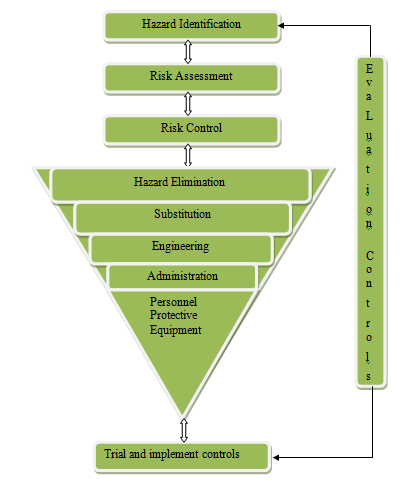Purpose
The main purpose of Safety Management Plan (SMP) in any organization is to provide the organization with strategies, measures that permits organizations to be able to consistently identify and manage health and safety risks, and reduce the potential for accidents.
The written SMP is important in ensuring that organization comply with the numerous safety and health regulation stipulated by OSHA and other agencies that are responsible for governing safety and health at the workplace. Moreover, the SMP will also serve as a basis of the vital framework of the college commitment to shared safety responsibilities between the administrators, employees, and students.
Scope
In any institution or organization there are requisite set of safety plans that is reviewed, produced, and updated to ensure continual safety of members. The SMP is developed for Martin’s college detailing how the safety is going to be managed within Martin’s college administration offices department.
Effective Safety and Health Management Systems (SHMS) has been effectively used as a decisive tool in reducing the degree and severity of work-related illnesses and injuries; however, SHMS fails to recognize safety at the individual level.
Definitions of Terms and Abbreviations
SHMS: Safety and Health Management Systems
SMP: Safety Management Plan
OSHA: Occupational Safety and Health Act
OHSMS: Occupational Health and Safety Management System
OHS: Occupational Health and Safety
WHS: Workplace Health and Safety
Risks: means the likelihood of harm arising from exposure to any hazards and the consequences of that harm.
Hazards: are situations or things that have the potential cause harm to a person. Hazards in the administrative offices at Martin College may include; noisy office machinery, electricity chemicals, and violence at the office.
Risk assessment: it is the procedure that is applied in evaluating whether there are any risks linked with the identified hazards. Risk assessment basically involves taking into account the duration, frequency and nature of contact the hazards.
Risk control: means taking appropriate actions in order to eliminate health and safety risks at the workplace. However, when the actions do not eliminate the hazard, then it entails minimizing the risks so far as is practically possible since only eliminating a hazard does not eradicate any risks associated with that hazard.
Measures involved in eliminating risks

Fig.1.1: SMP system overview
Safety Policy
- Ensure the organization has an up-to-date policy on health and safety
- Ensuring that the content of the policy is made available to all stakeholders in the college.
- Establishing clear reporting, investigation and resolution procedures.
Safety standards and performance
- Should include provision of appropriate workstation equipment in the administration offices.
- Establish effective work standards that must be followed my all employees
- Ensure environmental safety
- Carry out comprehensive risk assessment and management
- Spell out emergency actions
- Ensuring personal safety
Administrative structure
- The college’s top managers ought to be in control of the main activities that impacts greatly on the performance of the college in terms of ensuring the safety and health of employees
- The administrators should understand the hazards and risks associated with operations in the workplace.
Risk assessment process
Occupational health and safety must be managed is a systematic way. However, the system of management depends on the size and nature of the organization. The following procedures are followed in risk assessment:
- Identify the hazards-establish what might be the cause of the harm
- Asses the risks if necessary-understanding the nature of the harm and how severe the harm could be and the likelihood of it reoccurring.
- Control risks-engage the most efficient control measure to curb the harm.
- Review control measures-this is done to ascertain that the measures are working as required by OHS standards.
Fig. 1.2: The hazard management approach

Hazard control system
- Application of appropriate control measures
- The evaluation of the measures to identify areas of weaknesses
- Application of corrective measures to curb the identified faults in the system
Record of work health and Safety (WHS)
Risk register and implementation Plan
WHS training register
Procedure for implementation
The implementation of the SMP in Martin College will involve all the stakeholders will have to adhere to all the standards that are laid down under the New Work and Safety legislation. To achieve this, workers in the administrative department will have to have to undergo intensive training on the requirements of the WHS Act 2011.
The workers will also train on the work procedures to enable them to perform tasks safely. The training will be necessitated when either a new technology or machinery is introduced in the office, or carrying out an induction to new employees. Ultimately, the workers will be required to demonstrate their ability to perform the tasks they are competent in.
Moreover, the there will be need to supervise the workers with the junior employees requiring high levels of supervision compared as opposed to the more experienced employees who will be accorded minimal levels of supervision.
System evaluation
The critical elements of an effective SMP are: management commitment and employee involvement, workplace analysis, hazard prevention and control, training for employees, supervisors and managers.
An effective SMP system must therefore include the evaluation procedure to help gauge its effectiveness and guide in creation of measures to correct the flaws in the system. The evaluation will be done on a half year basis-after every six months-by the respective managers through data collection from the employees to that will inform further action.